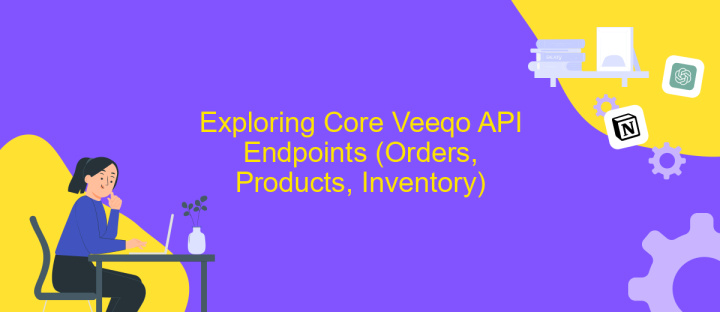Veeqo API Integration
The Veeqo API Integration offers businesses a seamless way to streamline their inventory management, order processing, and shipping operations. By connecting Veeqo with various e-commerce platforms and marketplaces, companies can enhance their operational efficiency and improve customer satisfaction. This article explores the key features of Veeqo API Integration, its benefits for businesses, and how it can transform your retail operations into a more cohesive and automated system.
Introduction to Veeqo and its API
Veeqo is a powerful platform designed to streamline and optimize inventory management and order fulfillment for retailers. By providing a centralized system, Veeqo enables businesses to manage their inventory across multiple sales channels, ensuring efficient operations and enhanced customer satisfaction. The platform is particularly beneficial for e-commerce businesses looking to automate their processes and improve overall efficiency.
- Centralized inventory management across multiple sales channels
- Automated order fulfillment and shipping processes
- Real-time inventory updates and tracking
- Comprehensive reporting and analytics tools
The Veeqo API offers a robust set of tools for developers aiming to integrate Veeqo's functionalities into their own systems. This API allows for seamless data exchange, enabling businesses to customize and automate various aspects of their operations. With its comprehensive documentation and support, developers can easily harness the power of Veeqo to build efficient and scalable solutions tailored to their specific needs. Whether it's syncing inventory levels or processing orders, the Veeqo API provides the flexibility and control necessary for modern retail operations.
Understanding the Veeqo API Key and Authentication

Understanding the Veeqo API key is crucial for seamless integration with the platform. The API key serves as a unique identifier that allows your application to communicate with Veeqo's servers, ensuring secure data exchange. To obtain this key, you must first create a Veeqo account and navigate to the API settings. Here, you can generate a new API key, which should be kept confidential to prevent unauthorized access. The API key is used in the authentication process, enabling your application to perform various operations such as managing orders, inventory, and shipping details.
Authentication with the Veeqo API typically involves including the API key in the header of your HTTP requests. This process validates your application and authorizes it to interact with Veeqo's services. For those seeking to simplify integration, platforms like ApiX-Drive can be immensely helpful. ApiX-Drive offers tools and services to streamline the integration process, reducing the technical burden and allowing you to focus on leveraging Veeqo's capabilities to enhance your business operations. By utilizing such services, you can ensure a more efficient and reliable connection to Veeqo's API.
Exploring Core Veeqo API Endpoints (Orders, Products, Inventory)

Integrating with the Veeqo API opens up a world of possibilities for managing orders, products, and inventory with efficiency and precision. The API provides robust endpoints that allow businesses to streamline their operations and enhance their e-commerce capabilities.
- Orders Endpoint: This endpoint allows you to create, update, and retrieve orders. It provides detailed order information, including customer details, shipping status, and payment information, enabling seamless order management.
- Products Endpoint: Through this endpoint, you can manage your product catalog by adding, updating, or retrieving product details. It supports attributes like pricing, descriptions, and images, ensuring your product listings are always accurate and up-to-date.
- Inventory Endpoint: This endpoint is crucial for tracking stock levels across multiple locations. It allows you to adjust inventory quantities, monitor stock availability, and prevent overselling by synchronizing inventory data in real-time.
By leveraging these core Veeqo API endpoints, businesses can optimize their workflows, reduce manual errors, and provide a better customer experience. Whether you're a retailer or a developer, understanding these endpoints is key to unlocking the full potential of the Veeqo platform.
Practical Examples and Use Cases of Veeqo API Integration

Integrating Veeqo API into your e-commerce platform can significantly enhance your operational efficiency. By automating inventory management, you can synchronize stock levels across multiple sales channels, reducing the risk of overselling and improving customer satisfaction. Additionally, Veeqo's API allows for seamless order processing, ensuring orders are accurately tracked and fulfilled on time.
One practical example of Veeqo API integration is its use in streamlining shipping operations. By connecting your store to various shipping carriers, you can automate the selection of the most cost-effective shipping option for each order. This not only saves time but also reduces shipping costs, thereby increasing your profit margins.
- Automated inventory synchronization across platforms
- Real-time order tracking and fulfillment
- Integration with multiple shipping carriers for cost-effective delivery
- Enhanced reporting and analytics for sales performance
Incorporating Veeqo API into your business operations can lead to significant improvements in efficiency and customer satisfaction. By leveraging its features, businesses can automate routine tasks, allowing them to focus on strategic growth and customer engagement.
- Automate the work of an online store or landing
- Empower through integration
- Don't spend money on programmers and integrators
- Save time by automating routine tasks
Best Practices and Troubleshooting for Veeqo API Integration
When integrating with the Veeqo API, it's essential to follow best practices to ensure a seamless connection. Start by thoroughly reading the Veeqo API documentation to understand endpoints and data structures. Consistently test your API calls in a sandbox environment before moving to production to minimize errors. Implement robust error handling to gracefully manage API response failures and avoid disruptions. Regularly review API rate limits to optimize your requests and maintain efficient data flow. Consider using tools like ApiX-Drive to streamline your integration process, as it offers automated workflows that can simplify data synchronization between Veeqo and other platforms.
Troubleshooting common issues involves checking API credentials and ensuring they have the necessary permissions. If API requests fail, examine the response codes and messages to identify the root cause. Network issues can often be resolved by verifying your server's connectivity and firewall settings. Keep your integration updated with the latest API changes and enhancements to prevent compatibility issues. If persistent problems arise, consult Veeqo's support or community forums for guidance. Leveraging these practices will help maintain a robust and efficient Veeqo API integration.
FAQ
What is Veeqo API, and how can it benefit my business?
How can I start integrating with Veeqo API?
What are the common use cases for Veeqo API integration?
How can I automate Veeqo API integration without extensive coding knowledge?
What should I do if I encounter issues during Veeqo API integration?
Apix-Drive is a simple and efficient system connector that will help you automate routine tasks and optimize business processes. You can save time and money, direct these resources to more important purposes. Test ApiX-Drive and make sure that this tool will relieve your employees and after 5 minutes of settings your business will start working faster.


